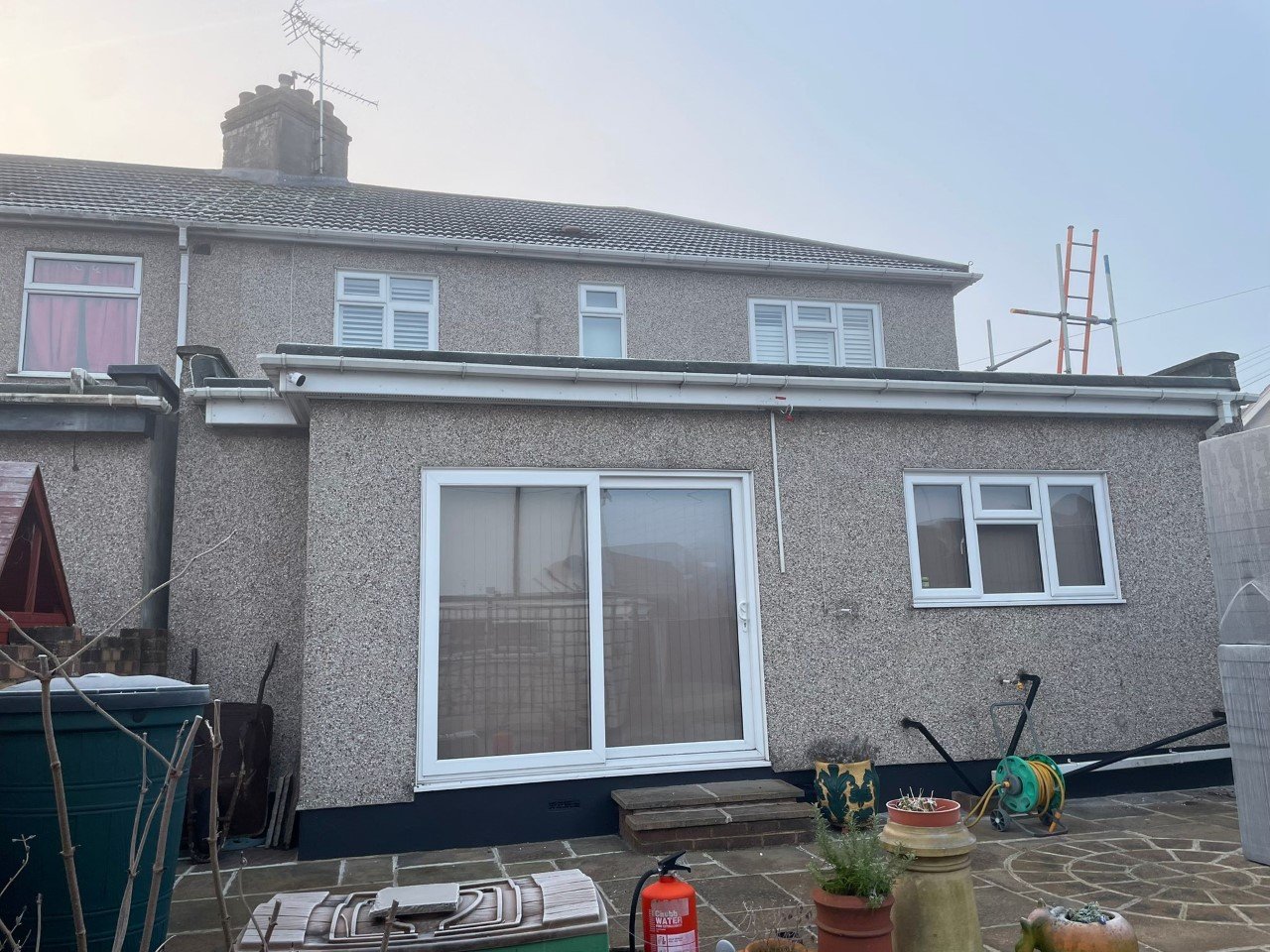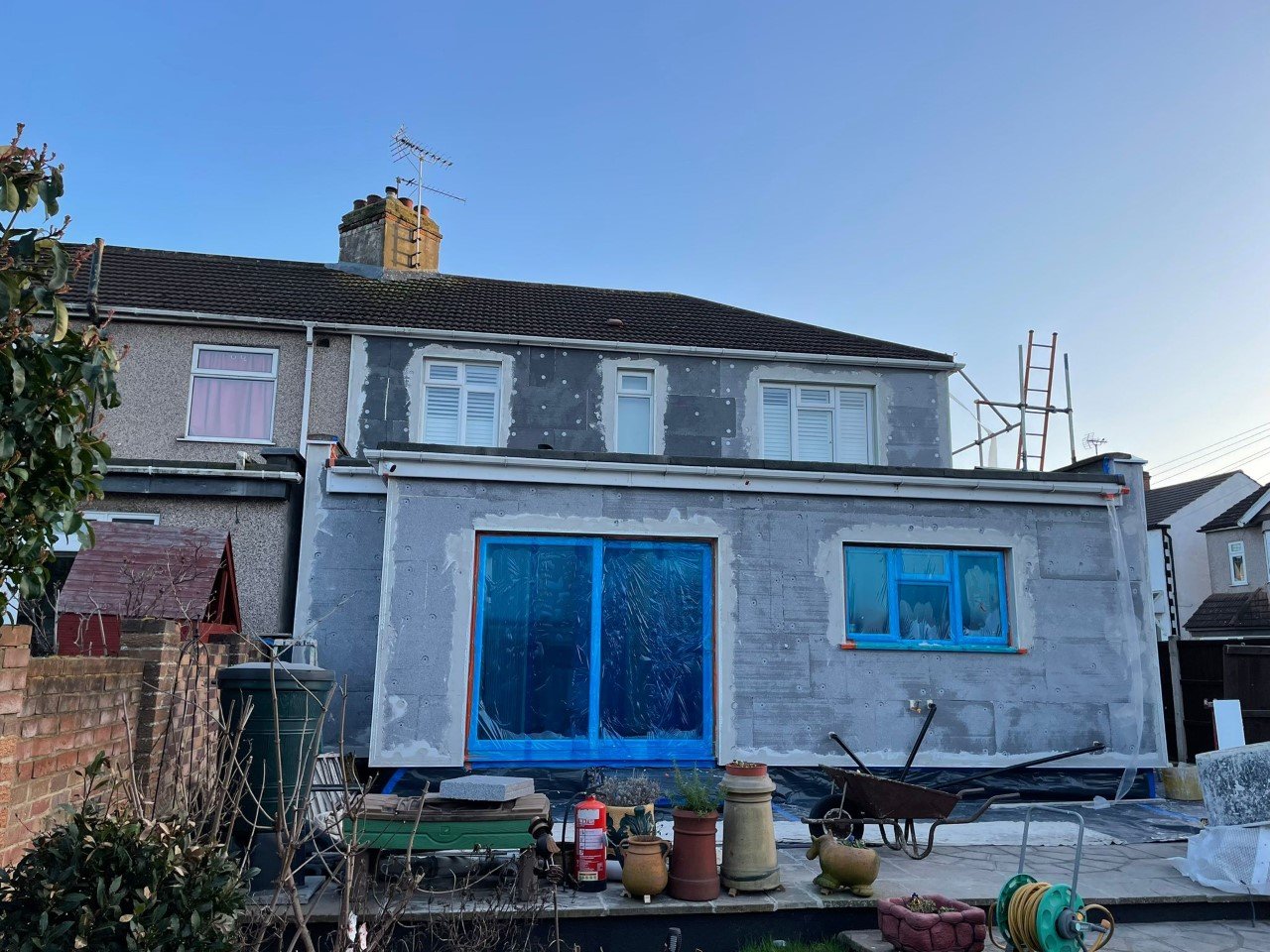External Wall Insulation
What is External wall insulation?
External wall insulation involves fixing a layer of insulation material to the wall, then covering it with a reinforcement and a special type of render. Some key benefits to EWI include:
· It can be applied with minimal disruption to the household.
· It reduces condensation on internal walls and can help prevent damp (but will not solve rising or penetration damp)
· It can make the building more airtight, reducing drafts and heat loss.
· It increases the life of the existing property by protecting the existing substrate from the weather.
· It improves weatherproofing and sound resistance.
Case Study - Wickford Bungalow
On this property the bedroom was very cold, the heat would go as soon as the heating turned off and the wardrobes had condensation dripping down them. Using 90mm eps insulation we saw a 3 degree increase in the room temperature and as you can see the heat escaping from the room is minimal especially when you compare it to the room that hasn’t been insulated yet. The wardrobe is now bone dry and a general reduction in condensation/humidity. The room even with the heating on full for the whole night would only ever get to 17-18 degrees maximum and now is sitting comfortably at 20 degrees after just 2 hours. More importantly the rate in which heat is lost when the heating is off has dropped dramatically loosing just 1 degree in 2 hours.
It’s nice to be able to back up what we claim and prove that Ewi really does work. Not many companies are willing to do the research. At Page Brothers we always try to use the thickest insulation possible for every job so the customer gets the most for their money.






